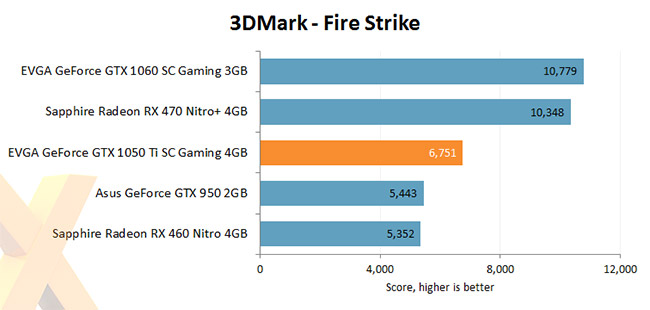Our Aim
To provide you with an overview on New And existing technologies, hopefully helping you understand the changes in the technology. Together with the overviews we hope to bring topical issues to light from a series of independent reviewers saving you the time And hassle of fact finding over the web.
We will over time provide you with quality content which you can browse and subscribe to at your leisure.
TekSpek 's

NVIDIA GeForce GTX 1050 and GTX 1050 Ti
Date issued:
2016 has been a busy year for graphics card launches and there appears to be no let-up as we approach the holiday season. Following on from the introduction of its GeForce GTX 1080, GTX 1070 and GTX 1060 products, GPU giant Nvidia is now furthering the appeal of its latest-generation Pascal architecture by launching a pair of entry-level solutions dubbed the GeForce GTX 1050 and GeForce GTX 1050 Ti.
Priced at £115 and £139, respectively, the latest 10-series duo are tasked with bringing the goodness of the Pascal architecture to mainstream audiences looking to experience the thrills of full-HD PC gaming.

Introduced primarily as small, affordable and competitive cards, the GTX 1050 range employs a new GP107 GPU built on a 14nm Samsung fabrication process. The small 135mm² die is home to 3.3 billion transistors and delivers up to 2,138 gigaflops of performance in a 75W package.
Efficiency is a key attribute, with the low power requirement enabling many GTX 1050-series cards to operate without the need for additional power cables. Sourcing all of the requisite juice from the PCIe interface heightens the GPU's appeal as a slot-in solution, and Nvidia has purposely positioned the GTX 1050 and GTX 1050 Ti as convenient upgrades to systems currently running on CPU-integrated graphics.
| GTX 1060 (3GB) | GTX 1050 Ti (4GB) | GTX 1050 (2GB) | GTX 950 (2GB) | GTX 750 Ti (2GB) | |
|---|---|---|---|---|---|
| Launch date | August 2016 | October 2016 | November 2016 | August 2015 | February 2014 |
| Codename | GP106 | GP107 | GP107 | GM206 | GM107 |
| Architecture | Pascal | Pascal | Pascal | Maxwell | Maxwell |
| Process (nm) | 16 | 14 | 14 | 28 | 28 |
| Transistors (bn) | 4.4 | 3.3 | 3.3 | 2.9 | 1.9 |
| Die Size (mm²) | 200 | 135 | 135 | 227 | 148 |
| Full Implementation | No | Yes | No | No | Yes |
| SM Units | 9 | 6 | 5 | 6 | 5 |
| Shaders | 1,152 | 768 | 640 | 768 | 640 |
| Texture Units | 72 | 48 | 40 | 48 | 40 |
| ROPs | 48 | 32 | 32 | 32 | 16 |
| Base Clock (MHz) | 1,506 | 1,290 | 1,354 | 1,024 | 1,020 |
| Boost Clock (MHz) | 1,708 | 1,392 | 1,455 | 1,188 | 1,085 |
| Peak GFLOPS | 4,372 | 2,138 | 1,862 | 1,825 | 1,389 |
| Memory Size (GB) | 3 | 4 | 2 | 2 | 2 |
| Memory Bus (bits) | 192 | 128 | 128 | 128 | 128 |
| Memory Type | GDDR5 | GDDR5 | GDDR5 | GDDR5 | GDDR5 |
| Memory Clock (Gbps) | 8.0 | 7.0 | 7.0 | 6.6 | 5.4 |
| Memory Bandwidth (GB/s) | 192 | 112 | 112 | 106 | 86 |
| Power Connector (pins) | 6 | - | - | 6 | - |
| TDP (watts) | 120 | 75 | 75 | 90 | 60 |
| SLI support | No | No | No | Yes | No |
| Launch MSRP (USD) | $199 | $139 | $109 | $159 | $149 |
Perusing the specification tables reveals that GTX 1050 Ti comes equipped with six Pascal-generation SM units, resulting in 768 shaders, 48 texture units and 32 ROPs. GTX 1050, meanwhile, cuts another SM unit, taking the number of shaders down to 640 and texture units to 40. The numbers seem eerily familiar, and it's clear to see why - from a configuration point of view, GTX 1050 Ti and GTX 1050 are like-for-like replacements of the older GTX 950 and GTX 750 Ti.
Aiming to deliver more performance in a similar power envelope, Pascal's architectural improvements are backed by higher core frequencies and, on the GTX 1050 Ti, more memory in the form of a 4GB GDDR5 frame buffer operating at 7Gbps.
Performance

Appreciating the fact that a void exists between the outgoing GeForce GTX 950 and the current GTX 1060, NVIDIA's mainstream GTX 1050 Ti fills the gap with a competitive 3DMark Fire Strike score of 6,751.

Benchmarks from leading review sites highlight partner GTX 1050 Ti cards as a solid choice for full-HD visuals in modern DX12 games. Titles such as Gears of War 4 can be rendered in excess of 60 frames per second with high-quality settings, and as expected the new GeForce slots in ahead of the low-cost Radeon RX 460 and behind the pricier Radeon RX 470.
Summary
Having tackled the high-end and mid-range markets with considerable success, NVIDIA's latest-generation Pascal architecture has now set its sights on mainstream audiences with the introduction of the GeForce GTX 1050 and GTX 1050 Ti. Primed for 1080p gaming and requiring no external power connector, the cards serve as an attractive entry point into the world of PC gaming and set a new benchmark for bus-powered performance.

A wide range of NVIDIA GeForce GTX 1050 Ti and GeForce GTX 1050 graphics cards are available from Scan Computers